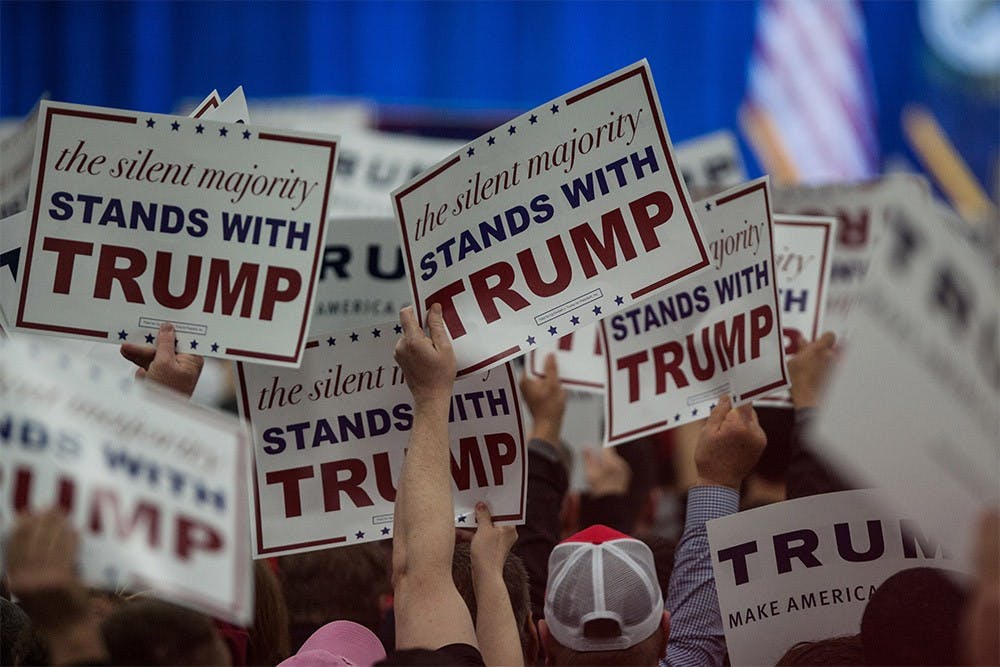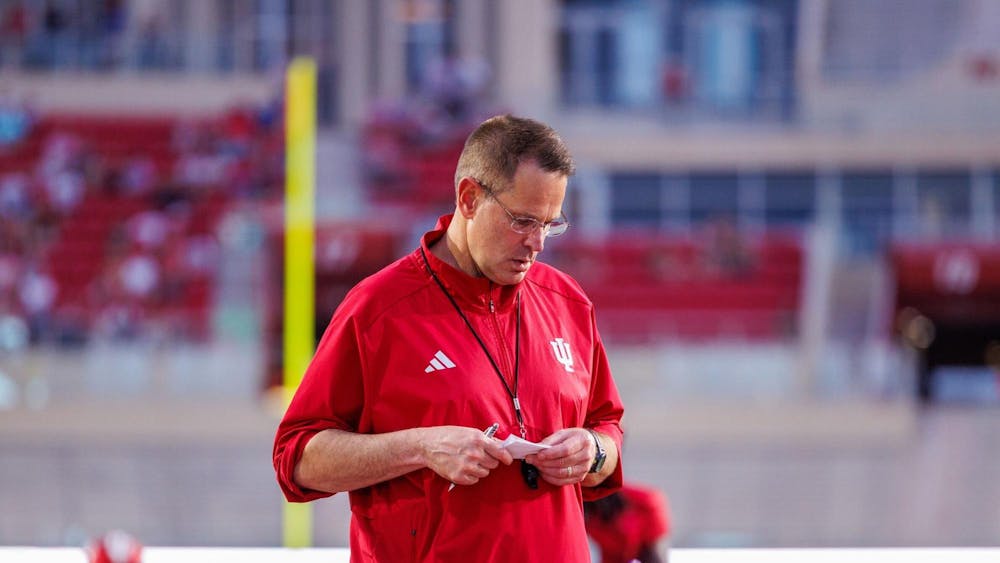Mike Smith sat at Saint Lawrence Catholic Church on Municipal Election Day in November 2015, working the polls for several hours and watching people walk through his line.
Smith, who knows a large majority of Hispanic Catholic voters at the parish, explained how out of the 700 people that walked through his line that day at the church in Lafayette, Indiana, he didn’t see more than one or two Hispanic voters.
“We know from the Census Bureau that one in 10 folks in Tippecanoe County are a minority, but we certainly weren’t seeing that represented in our public forum or in the polls,” Smith said. “We know we’re seeing a gap between what the population really is and what their participation rate is.”
Smith, president of Citizens for Civil Rights in Lafayette, is part of an outreach program called DIVE-IN, which aims to break the barriers the group believes discourages Hispanic citizens from voting.
His group goes door to door in areas with a high Hispanic population and educates people on why they should vote. He said they have been doing this on a larger scale for the 2016 presidential election.
The Hispanic community has persistently voted at low levels in past elections, but many expect the focus on immigration — not to mention presidential candidate Donald Trump’s incendiary anti-immigrant rhetoric — could boost Hispanic voter turnout.
Smith said he believes this could be true on a larger scale, but not in Indiana.
While Smith said he thinks Trump is a media creation, he sees too many barriers in Indiana, such as the obligation to register and the burden of the voter-ID law, which requires all citizens to show a photo ID to cast a ballot. This law immediately turns away eligible citizens who cannot afford to get an ID and new Americans who haven’t obtained an ID.
Smith said Hispanics in Indiana tend to be “hands-off government” because they have not experienced government action in the past, and they tend to have to deal with things themselves. He said he believes although the Hispanic community is not hearing the message they want, it’s not driving them to come out in the general election either.
They may be angered, but their anger might just make them not want to be involved in the process at all, he said.
“When you have things like Donald Trump and other folks spouting such negative diatribe, even aside from anger and frustration, does that sound welcomed?” Smith said. “Do you want to be part of a process that produces people like that and panders to people like Trump?”
According to the 2012 Census Bureau, of the 110,657 Latinos eligible to vote in Indiana, only 49,000 did.
IU political participation researcher Bernard Fraga said although there is a steady increase in the Hispanic population in the country, the percent of people who actually vote is not keeping up with that increase.
According to the American Immigration Council, the Hispanic portion of Indiana’s population grew from 1.8 percent in 1990 to 6.4 percent in 2013. In the 2012 elections, Latinos cast roughly 1.7 percent of votes.
Fraga said a spark, such as Trump’s negative comments about immigrants and Hispanics, could stimulate a larger turnout, decreasing that gap.
According to the Los Angeles Times, Trump said in his speech announcing his candidacy for president, “When Mexico sends its people, they’re not sending their best. They’re bringing drugs. They’re bringing crime. They’re rapists. And some, I assume, are good people.”
According to the Huffington Post, Trump said in an interview with Fox News, “The Mexican government is much smarter, much sharper, much more cunning. And they send the bad ones over because they don’t want to pay for them. They don’t want to take care of them.”
The majority of the Hispanic vote has consistently gone Democratic since 1980, according to Pew Research Center.
In the 2012 elections, 71 percent of the Hispanic vote went to Democratic candidate Barack Obama, while only 27 percent went to Republican candidate Mitt Romney.
Pleasing the growing Hispanic population could become a campaign strategy for candidates, Fraga said.
“As the population grows, it not only makes it so that Latinos could have more influence in an election because they’re a larger part of the voting population, but also, now that others say, ‘Hey, this is a key demographic,’” Fraga said.
Fraga said Trump’s comments could cause him to lose a whole community of votes.
“It’s going to be more and more difficult for a candidate to ignore issues that are important to that growing population and to present a platform or have a stance on a policy idea that would be something that the Latino population would very much not like,” Fraga said.
As Trump continues to win primary elections and gain electoral votes, Hispanics are questioning if Trump’s candidacy is more of a reality TV show or a threat to their community that must be stopped, Fraga said.
Fraga believes the opposition to the possibility of Trump becoming president could just be enough to close the gap between the growing Hispanic population and the habitually low Hispanic turnout.
Leslie Luna, an IU senior and daughter of Mexican immigrants, recognizes the media attention Trump is gaining has translated into his popularity in the election polls.
Americans who are politically uninformed are willing to vote for Trump because he provides entertainment, Luna said.
“Our future president should not be a spectacle for people to laugh at, but rather someone inspiring and a leader,” Luna said. “I am ashamed of the people who have made him a frontrunner in the upcoming election.”
Luna said she thinks Hispanics who did not vote in the past are more likely to vote this time around.
It is clear from several riots and petitions that Hispanics are angry and taking action, but the question remains whether this anger will translate into vote in the May primary and then the General Election in November.
According to CNN, riots broke out March 11 in Chicago when Trump’s rally was postponed due to safety concerns.
Supporters and protesters broke out into fistfights in the streets after the cancelation. Many were detained or forcefully carried out of the event.
A Trump media appearance on Nov. 7, 2015, triggered a petition signed by 522,080 people.
The petition was against NBC for allowing Trump to host “Saturday Night Live” after NBC had previously issued a statement terminating all ties with Trump. There was a rally held outside 30 Rockefeller Plaza, where “SNL” is taped.
Regardless of the effort, the show still aired and Hispanics felt their voices weren’t heard once again, said Juan Escalante, initiator of the petition and director of Digital Campaign for America’s Voice.
“This is not a show where Trump gets to go ahead and explain what his policies will be, his hopes, his aspirations, what his campaign might be,” Escalante said. “To me, it shows that they’re trying to prioritize the ratings ahead of people.”
Escalante said he believes Trump’s comments will act as a major source of motivation for Hispanics to vote and that Hispanics will have an effect on the upcoming election.
“Wherever he goes and speaks at, violence follows,” he said.
On americasvoice.org there is a “Trump Hate Map,” which shows all of the “documented instances where Donald Trump, his supporters, or his staff harassed or attacked Latinos and immigrants.” According to the map, there have been 44 separate documented instances since Trump began running for president.
“We are all immigrants in this country, and just because we’re the most recent wave of immigrants doesn’t mean you should kick us out,” Luna said.






